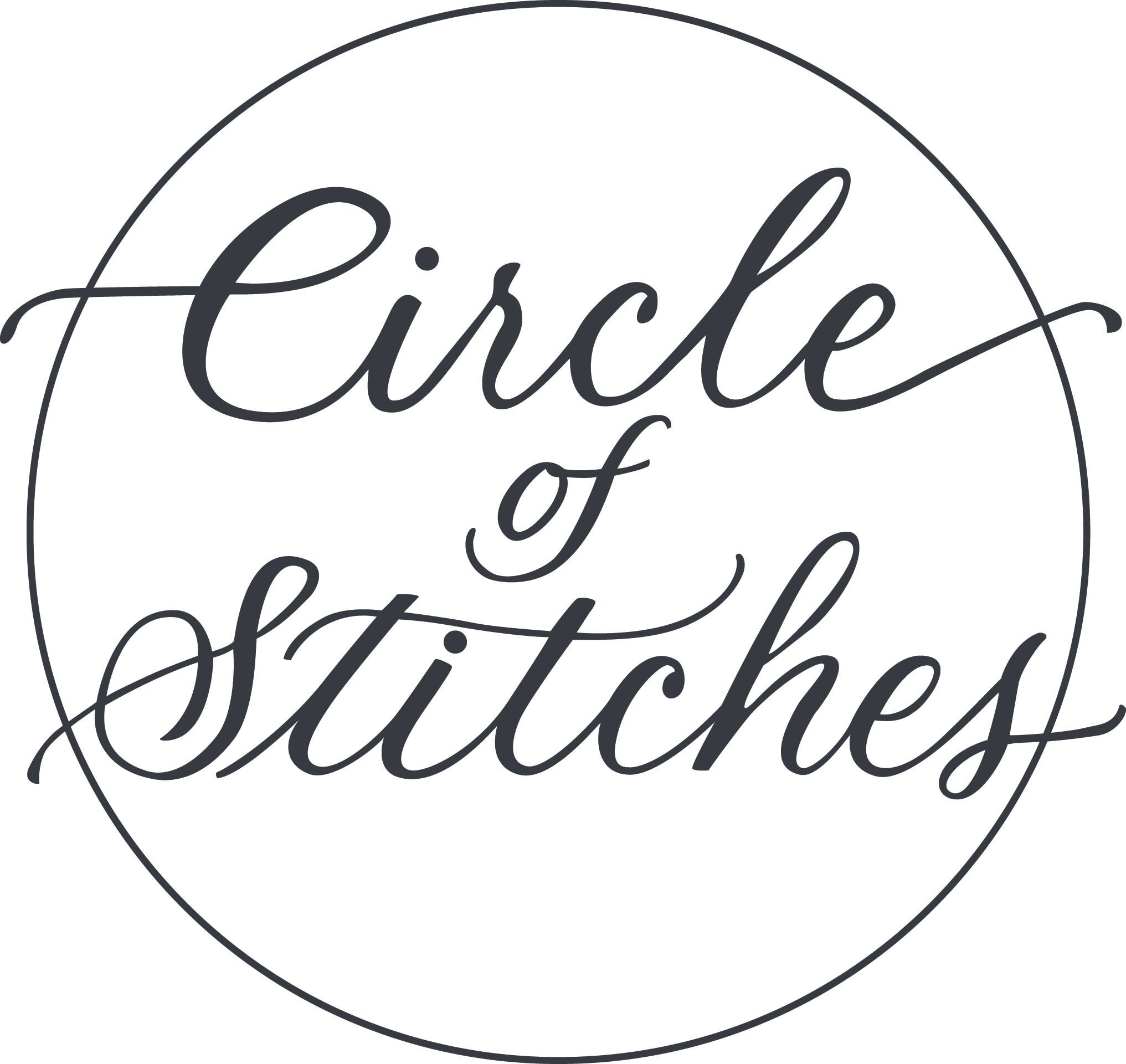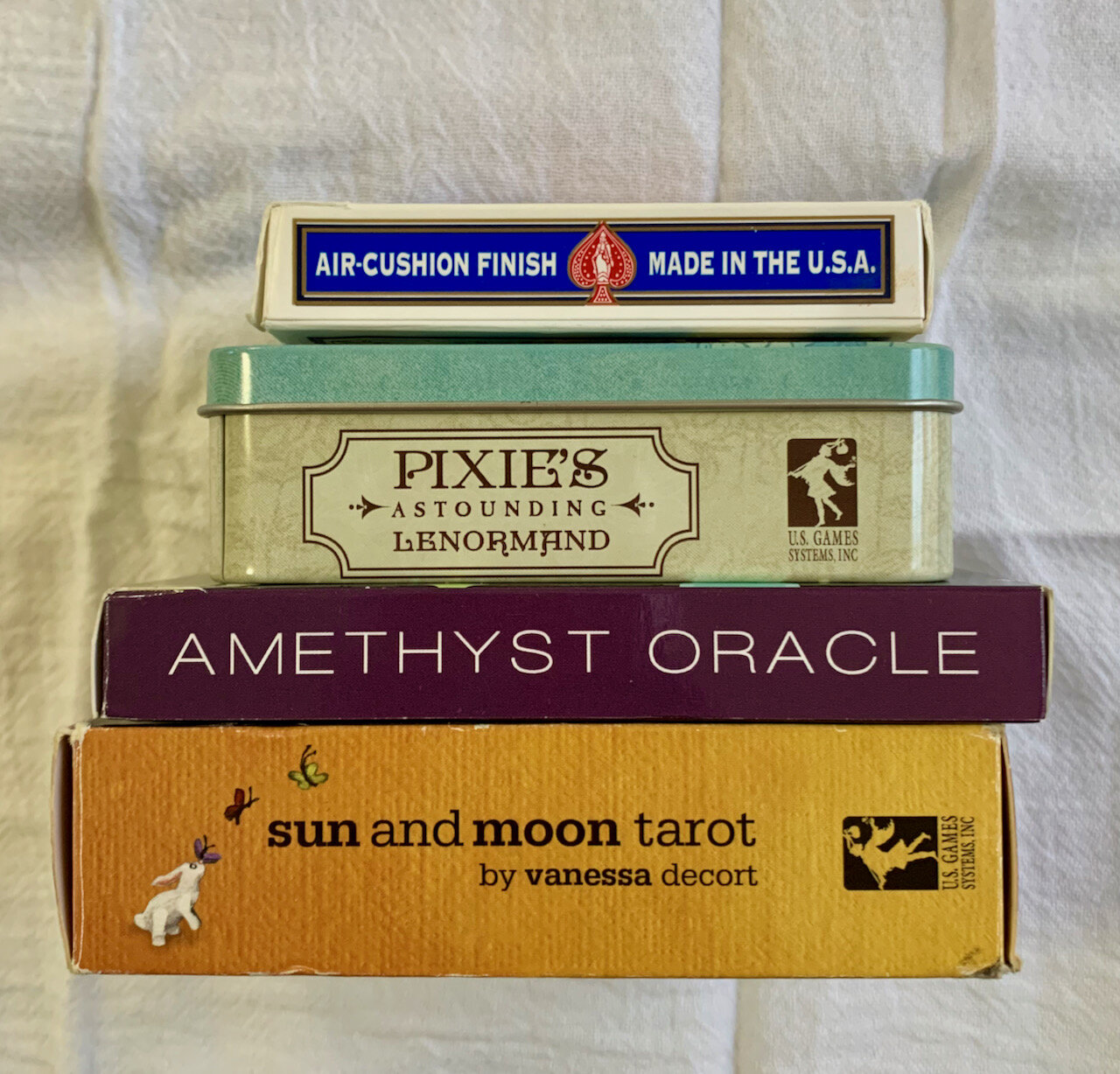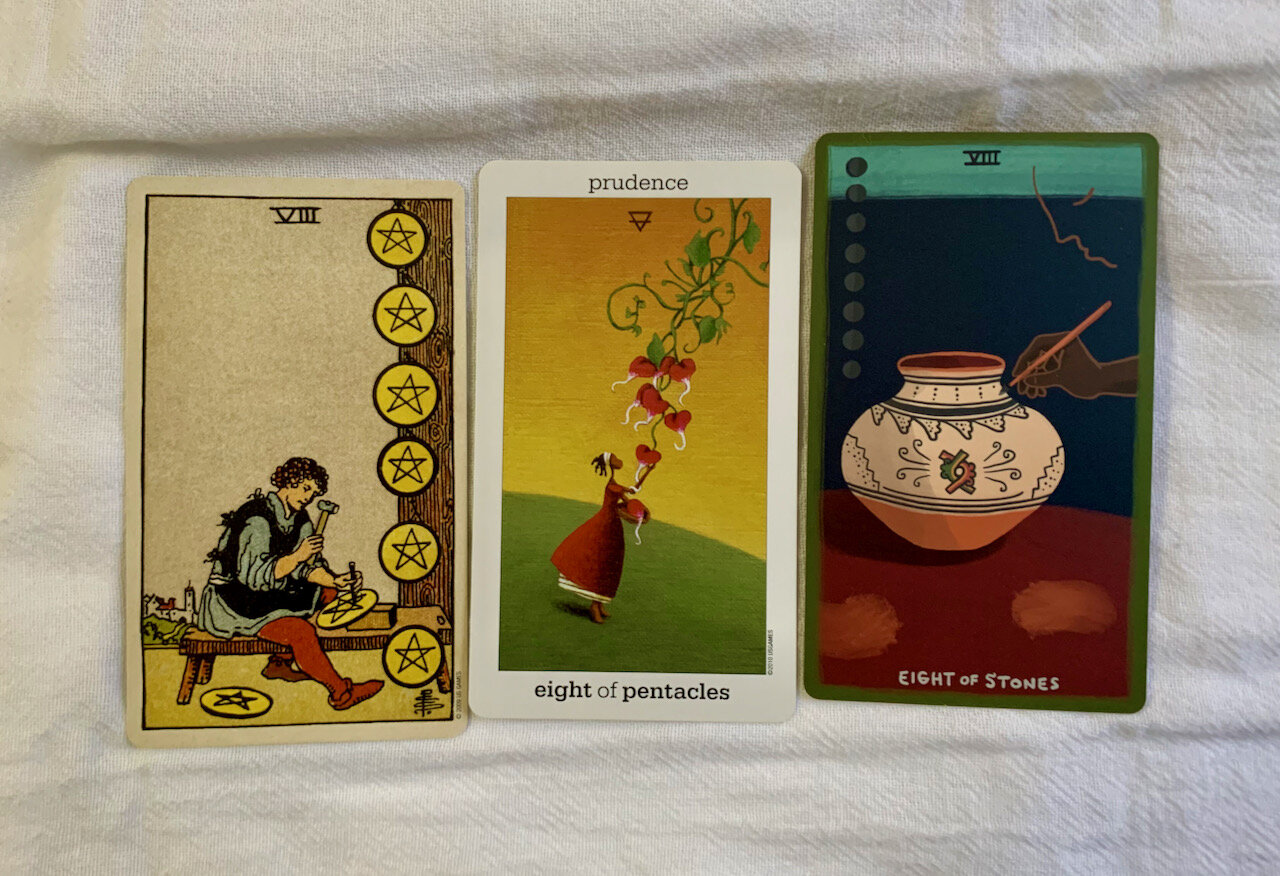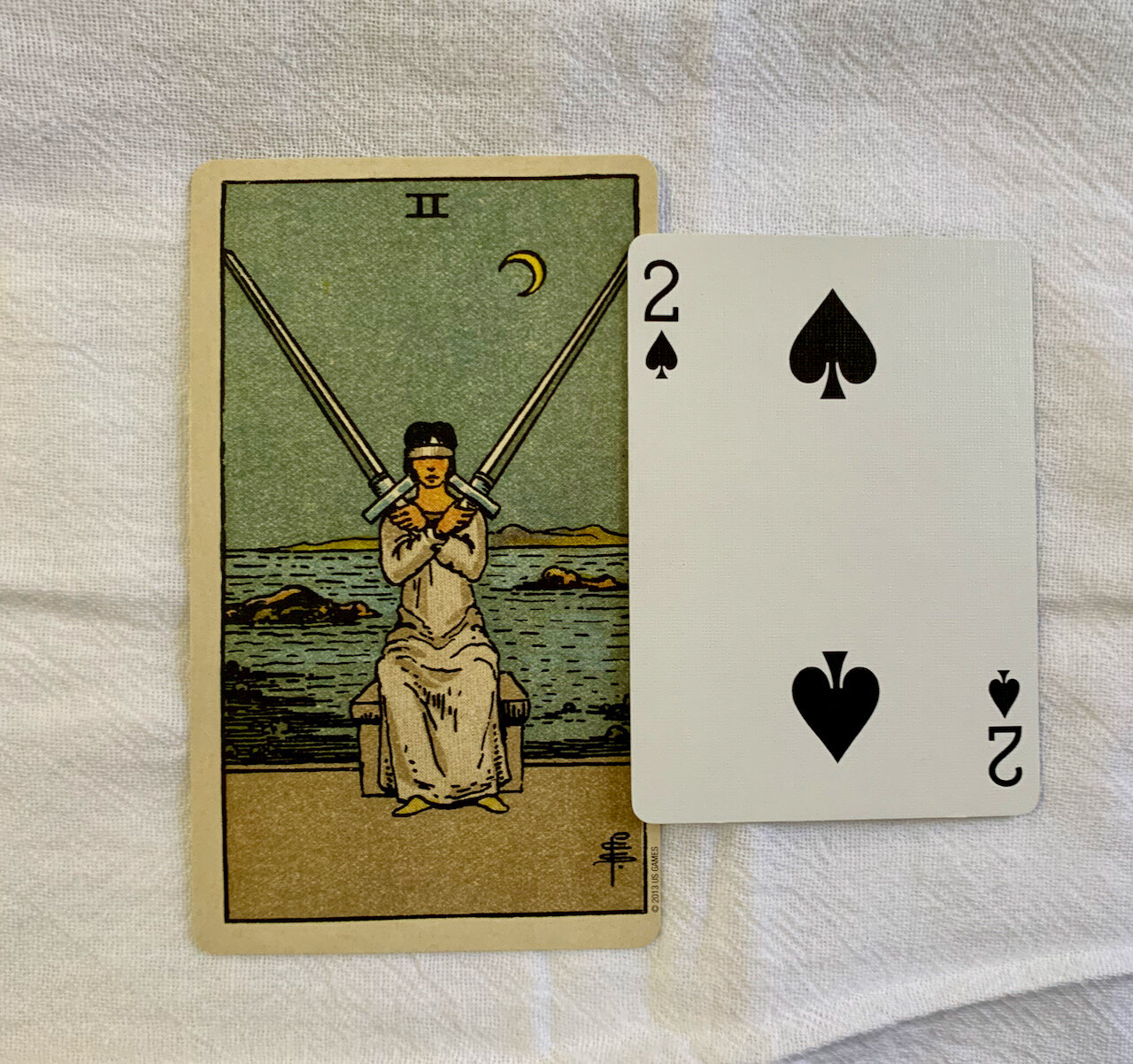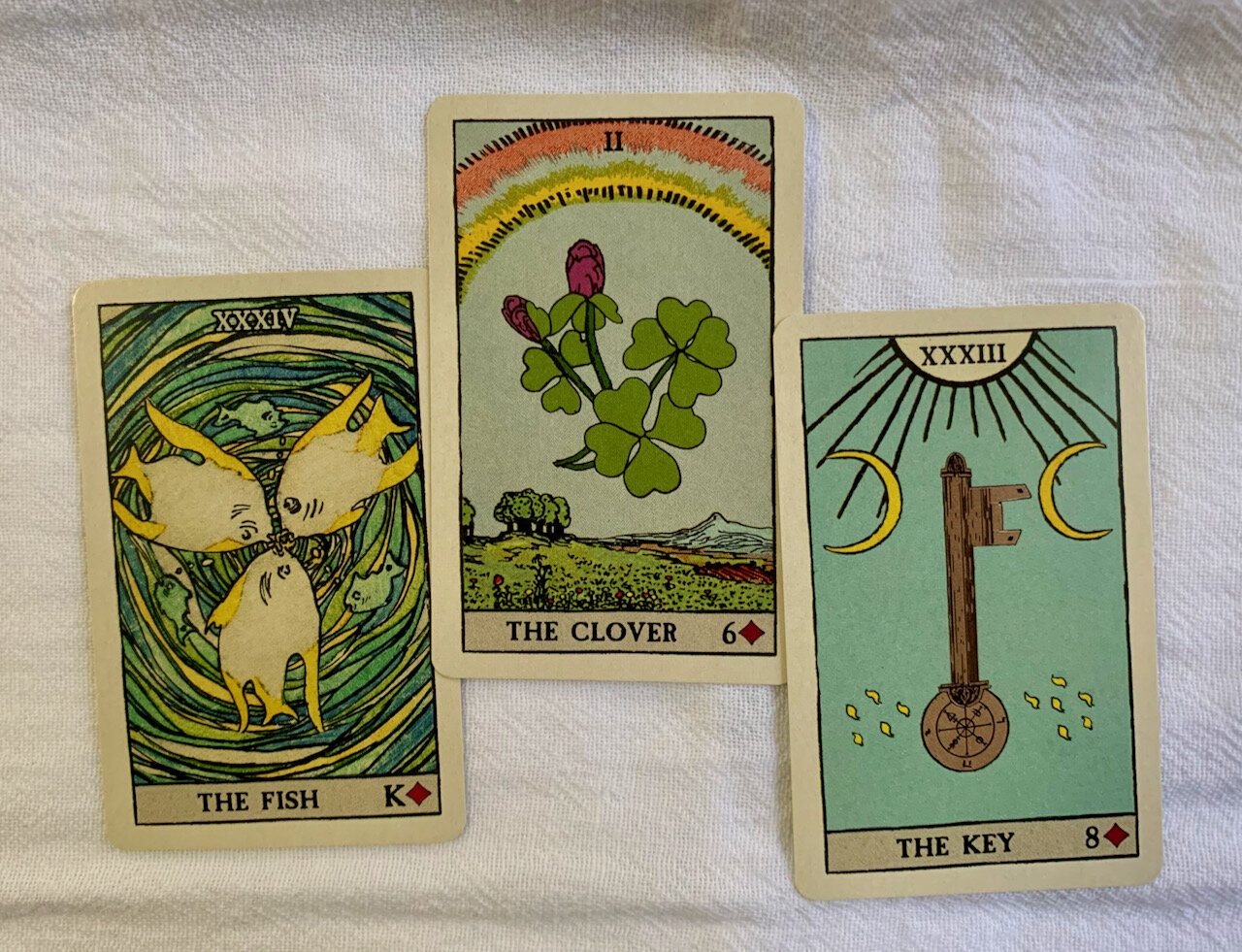Cartomancy is fortune telling or divination done using a deck of cards. It’s not just limited to tarot. You can use oracle cards or Lenormand cards or even regular playing cards.
A deck of blue Bicycle brand playing cards, Pixie’s Astounding Lenormand, Amethyst Oracle, Sun and Moon Tarot
Tarot cards are a deck of 78 cards, containing a minor arcana of 4 suits Ace-King (cups, wands, swords, pentacles) and a major arcana of 22 cards. Sometimes the names are changed, pentacles becomes coins, cups become vessels. Sometimes there’s an extra card or two in the deck. There are three main styles of tarot cards: Rider-Waite-Smith, Thoth, and Marseille.
Rider-Waite-Smith (often abbreviated RWS) is named for the publisher Rider, the author Arthur Evans Waite, and the artist, Pamela Coleman-Smith. It was published in 1909 and is considered a classic and basic deck. Many tarot books use these illustrations for the cards. Also, many contemporary decks are adaptations of the RWS imagery.
The Thoth deck was created in the 1930s and 40s by Aleister Crowley and painted by Lady Freida Harris. It wasn’t published until 1969. The Thoth deck has 78 cards, but there are differences between it and the RWS. In Thoth decks, Strength is 11 and Justice is 8, while in RWS Strength is 8 and Justice is 11. Also, The court cards in RWS are Page, Knight, Queen, King, while in Thoth they are called Knight, Queen, Prince, Princess. There are other, more esoteric differences between the decks, like astrological correspondence.
The Marseille tarot is based on a 17th century French deck and is one of the oldest complete versions of the tarot. The art style of modern Marseille is based on early modern woodcuts. Notably, this deck features no illustrations for the minor arcana, only the number of batons, swords, coins, cups of that card.
Despite the difference in their illustrations, RWS, Thoth, and Marseille decks are all tarot decks and can be read the same way. Labyrinthos has a very helpful chart laying out all the similarities and differences among the three tarot systems.
The 8 of Pentacles from the Smith-Waite Centennial Tarot Deck, Sun and Moon Tarot, The Gentle Tarot
If you’re determined, you can also use playing cards, and map the tarot reading of the minor arcana onto a modern 52 card deck. Of course, you won’t have the Major Arcana, and you’re missing one of the court cards, but the suits map Hearts to Cups, Spades to Swords, Diamonds to Pentacles, and Clubs to Wands.
The 2 of Swords from the Smith-Waite Centennial Tarot and the 2 of Spades
Lenormand cards were named after Marie Anne Lenormand, a French fortune teller and cartomancer active in the 18th & 19th centuries. A normal Petit Lenormand deck has 36 cards, each with a specific symbol, and usually with a playing card associated. Lenormand cards are read using very specific spreads such as the Grand Tableau.
The Fish, The Clover and The Key from Pixie’s Astounding Lenormand
Oracle cards are completely freeform and are up to their creator. They can be any number of cards, on any theme. There are no rules or restrictions around oracle cards.
Oracle cards from Inquire Within, Amethyst Oracle, and The Threadbound Oracle
You can also combine systems. Sometimes I will use an oracle card as a focus, and then daw 1-3 tarot cards to give it deeper meaning.
The Overwhelm card from the Amethyst Oracle is above a three card reading from the Sun and Moon Tarot: Death, The Sun, Three of Cups
Do you mix card systems? Or do you do tarot in conjunction with another divination system?
Inspired to try some different decks? Take a look at our collection!
